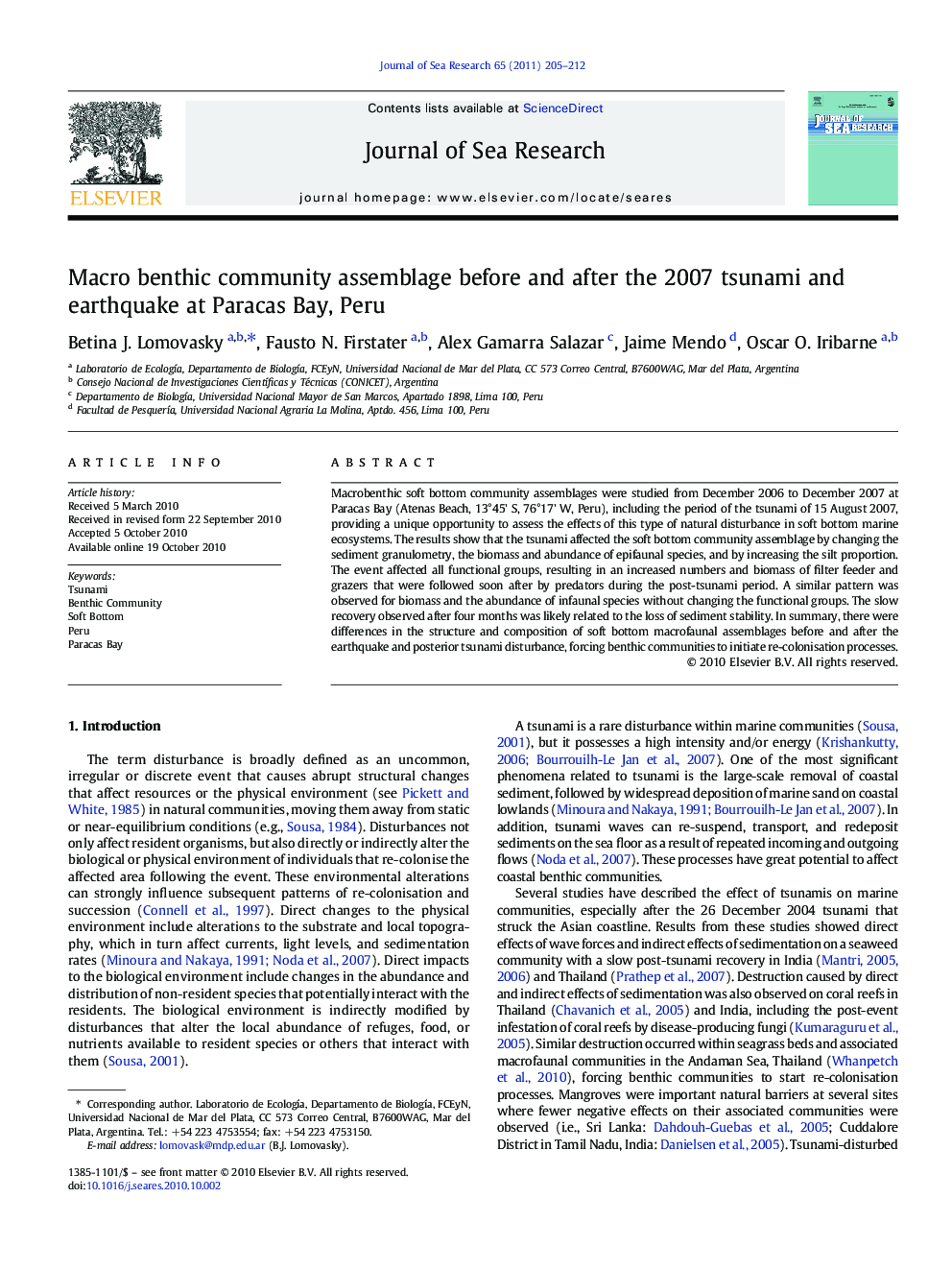| Article ID | Journal | Published Year | Pages | File Type |
|---|---|---|---|---|
| 4550198 | Journal of Sea Research | 2011 | 8 Pages |
Macrobenthic soft bottom community assemblages were studied from December 2006 to December 2007 at Paracas Bay (Atenas Beach, 13°45' S, 76°17' W, Peru), including the period of the tsunami of 15 August 2007, providing a unique opportunity to assess the effects of this type of natural disturbance in soft bottom marine ecosystems. The results show that the tsunami affected the soft bottom community assemblage by changing the sediment granulometry, the biomass and abundance of epifaunal species, and by increasing the silt proportion. The event affected all functional groups, resulting in an increased numbers and biomass of filter feeder and grazers that were followed soon after by predators during the post-tsunami period. A similar pattern was observed for biomass and the abundance of infaunal species without changing the functional groups. The slow recovery observed after four months was likely related to the loss of sediment stability. In summary, there were differences in the structure and composition of soft bottom macrofaunal assemblages before and after the earthquake and posterior tsunami disturbance, forcing benthic communities to initiate re-colonisation processes.
